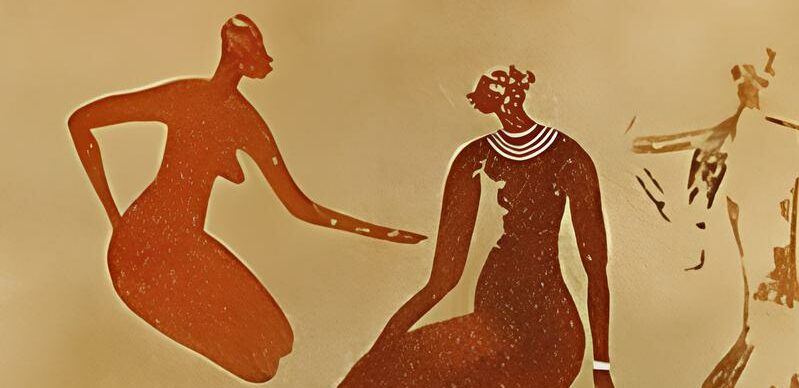The Sahara stands as the largest non-polar desert globally, covering an expansive 8,600,000 km² and dominating much of northern Africa, stretching from the Red Sea to the Atlantic Ocean. While perceived as a singular entity, it encompasses diverse geographical features and environments, such as sand seas, Stone deserts, seasonal watercourses, oases, mountain ranges, and rocky plains.
Throughout this vast region, rock art is prevalent, particularly in the desert mountain and hill ranges where there is ample stone. Notable locations include modern day Mauritania, Mali, Morocco, Algeria, Libya, Nigeria, Chad, as well as Egypt and Sudan, and the entire length of the Nile Valley.

The Berber People
The Haratin Berbers stand as the descendants of the visionary creators of the captivating paintings, tracing their roots as the original inhabitants of North Africa. These indigenous communities bear a profound connection to the ancient rock art that adorns the landscapes of the Sahara, embodying a heritage that has been passed down through generations.
The Haratin Berbers are a subgroup within the broader Berber ethnic group, indigenous to the Maghreb region in North Africa, encompassing countries such as Morocco, Algeria, Tunisia, Libya, Mali, Niger, and Mauritania. Historically, the Berbers, including the Haratin, have a rich cultural background dating back millennia, marked by interactions with various civilizations. The Haratin, traditionally associated with pastoral and agricultural activities, have a complex history that reflects diverse socio-economic and cultural dynamics across the Maghreb region.

Through the Haratin Berbers, the legacy of the original inhabitants of North Africa continues to thrive. These communities serve as living testimonials to the enduring spirit of their ancestors, ensuring that the narrative of the region’s ancient rock art remains vibrant and cherished within the fabric of their cultural heritage.
The Berber Language
The Berber languages belong to the Afro-Asiatic language family originating in the horn of Africa which include languages like ancient Egyptian, Somali (Cushitic), and Hausa (Chadic).
It is important to note that the word “Berber” is an Arabic (scholarly) term for North African and is also a linguistic term. Additionally the word “Moor” is used by Europeans to describe black or dark skinned people during the middle ages and encompasses both dark and light complexioned people of North Africa, but focuses primarily on those with darker skin tones.